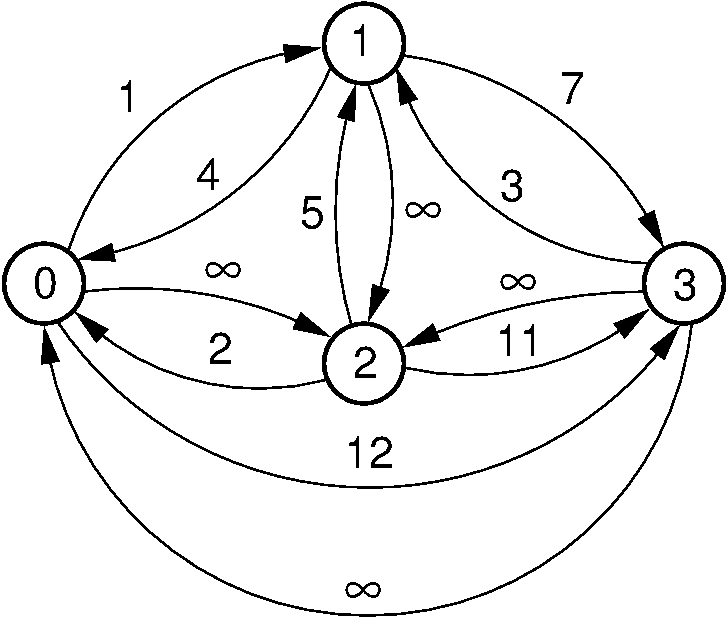// Dijkstra's shortest-paths: priority queue version
void DijkstraPQ(Graph G, int s, int[] D) {
int v; // The current vertex
KVPair[] E = new KVPair[G.edgeCount()]; // Heap for edges
E[0] = new KVPair(0, s); // Initial vertex
MinHeap H = new MinHeap(E, 1, G.edgeCount());
for (int i=0; i<G.nodeCount(); i++) // Initialize distance
D[i] = INFINITY;
D[s] = 0;
for (int i=0; i<G.nodeCount(); i++) { // For each vertex
do { KVPair temp = H.removemin();
if (temp == null) return; // Unreachable nodes exist
v = (Integer)temp.value(); } // Get position
while (G.getValue(v) == VISITED);
G.setValue(v, VISITED);
if (D[v] == INFINITY) return; // Unreachable
int[] nList = G.neighbors(v);
for (int j=0; j<nList.length; j++) {
int w = nList[j];
if (D[w] > (D[v] + G.weight(v, w))) { // Update D
D[w] = D[v] + G.weight(v, w);
H.insert(D[w], w);
}
}
}
}
